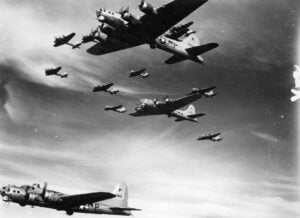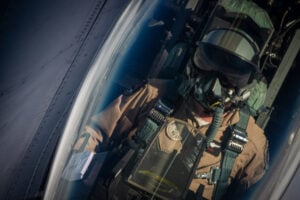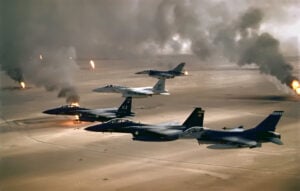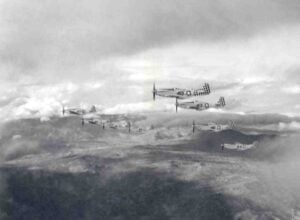10 Rare WWII Planes You Won’t Believe Still Exist at the National Museum
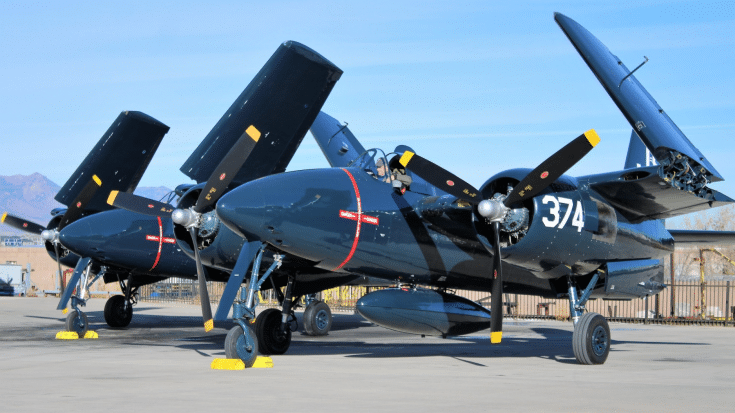
National Museum of World War II Aviation / Facebook
The National Museum of World War II Aviation in Colorado Springs holds a unique collection of rare and fully restored WWII aircraft. With around 20 aircraft in flying condition, this museum offers a glimpse into the evolution of aviation during the war years. Some of these planes are privately owned and on loan, while others are part of the museum’s permanent collection. The planes, along with an array of artifacts, help preserve the history of the aviation advancements made during World War II. Some of these aircraft may not always be on display due to space, maintenance, or commitments to events. Here are 10 rare WWII planes you can still see at the museum today.
Grumman F3F “Flying Barrel”
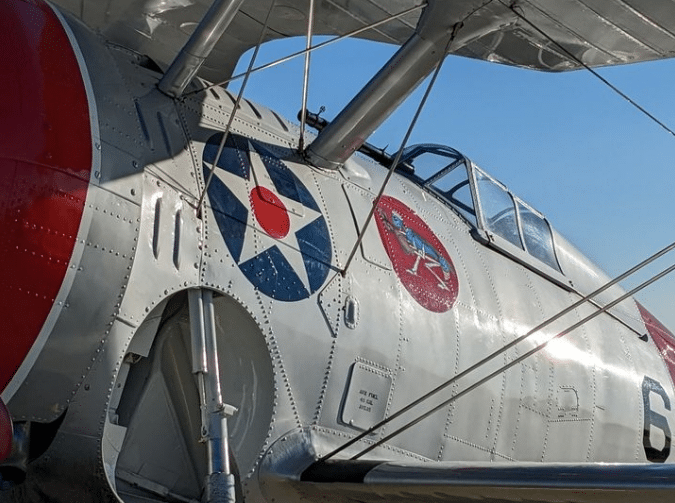
The Grumman F3F is a biplane fighter known for its stocky appearance, earning the nickname “Flying Barrel.” Developed in the 1930s, it represented the last biplane fighter in U.S. Navy service before the transition to monoplane designs. While it never saw combat during WWII, the F3F served as a training aircraft, preparing pilots for more advanced warplanes like the F4F Wildcat. The aircraft displayed at the museum allows visitors to see how aviation evolved from pre-war designs to the more modern fighters of the WWII era. It provides a clear contrast to the streamlined shapes that later dominated the skies during the conflict.
Lockheed P-38 Lightning
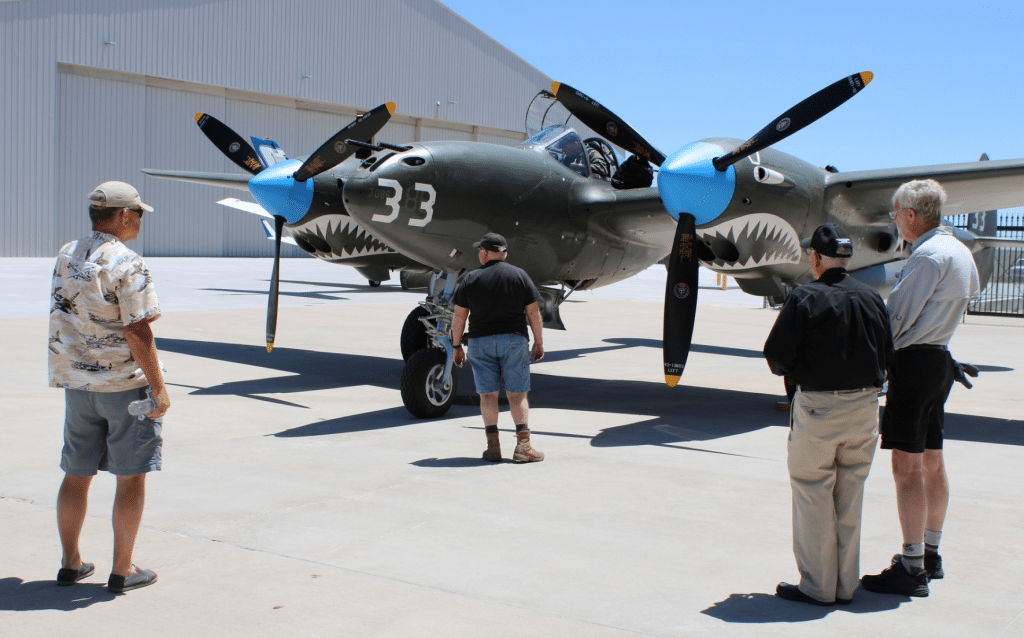
The P-38 Lightning is one of the most distinctive aircraft from World War II, with its twin-boom design and central nacelle housing the cockpit. Known for its speed and firepower, the P-38 excelled in various roles such as bomber escort, reconnaissance, and ground attack. It was especially effective in the Pacific Theater, where its long range allowed it to engage enemy aircraft over vast distances. The P-38 on display at the museum offers a chance to appreciate the engineering that made this plane so versatile. With its twin engines and powerful armament, it represents a key part of the U.S. military’s aerial strength during the war.
Brewster F3A Corsair
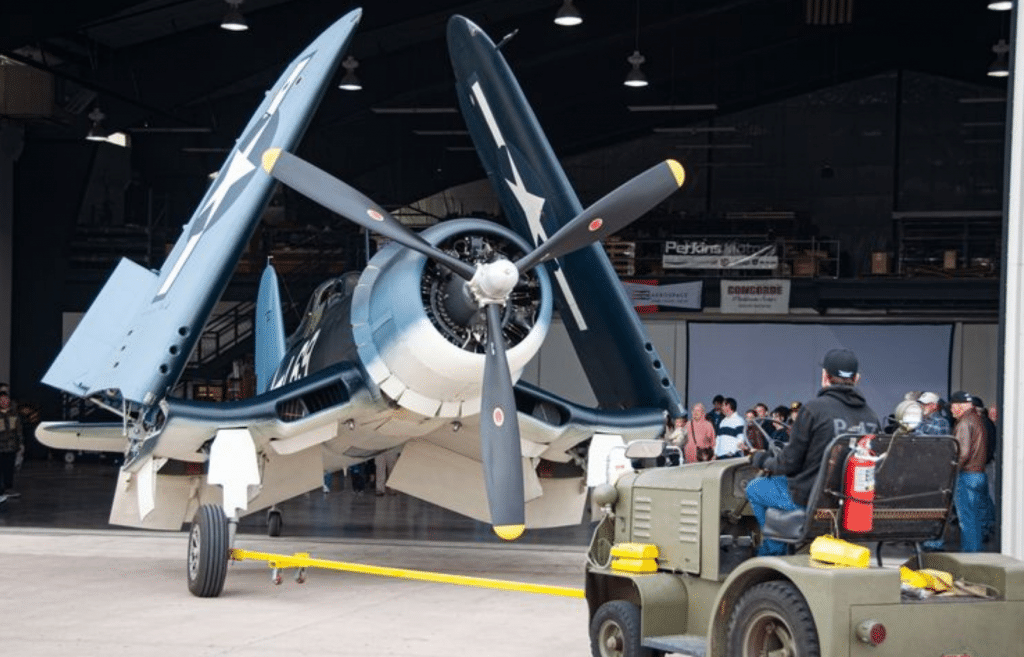
The Brewster F3A is a lesser-known variant of the famous F4U Corsair, produced under contract by the Brewster Aeronautical Corporation. Although it lacked the same performance standards as the Vought-built versions, it still served as an important part of the Allied effort in the Pacific. Its inverted gull wing design and robust airframe made it a capable carrier-based fighter. The museum’s display of this rare variant offers a glimpse into the production challenges faced during the war. It highlights how the demand for more planes led to multiple manufacturers building versions of the same aircraft, each contributing to the overall war effort.
Chance Vought F4U Corsair
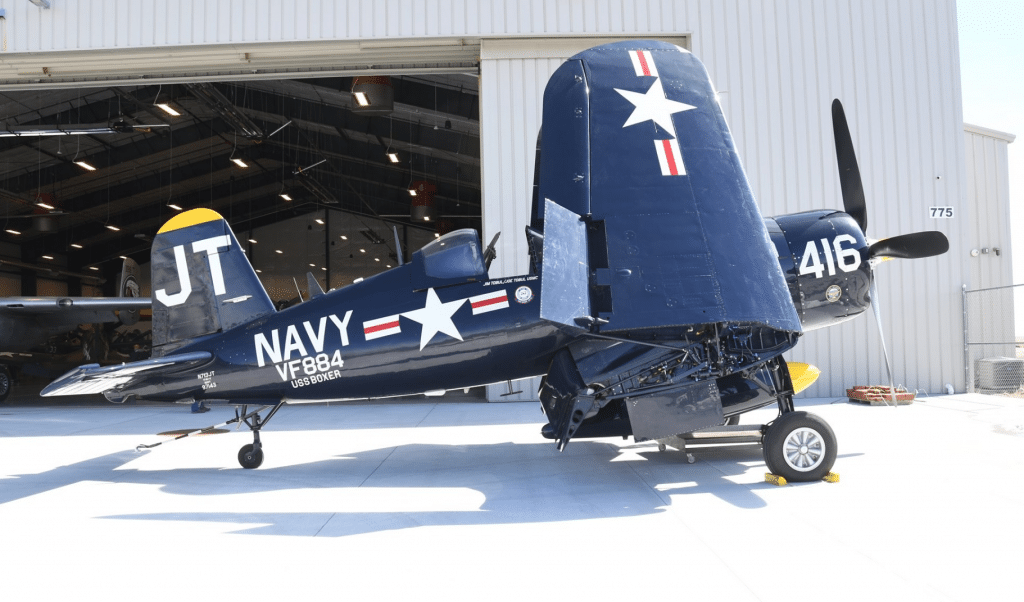
The F4U Corsair is widely known for its role in the Pacific, where its high speed and maneuverability made it a feared opponent in aerial combat. Its inverted gull wing design, intended to allow a larger propeller, gave it a distinctive appearance. The Corsair was particularly effective in providing ground support for troops during island campaigns. The museum’s example is fully restored, showcasing the sleek design that made it a favorite among pilots. Its presence at the museum serves as a reminder of the advancements in aircraft design that allowed the Allied forces to dominate the skies during the later years of the war.
Republic P-47 Thunderbolt
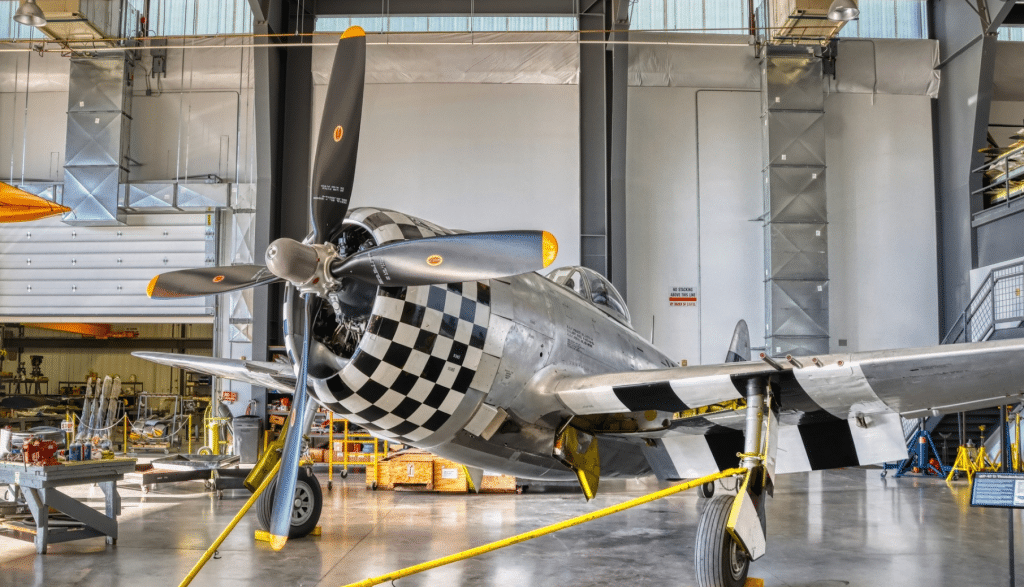
The Republic P-47 Thunderbolt, affectionately known as the “Jug,” is one of the heaviest single-engine fighters of WWII. Designed for both air-to-air combat and ground attack, it became known for its durability and ability to absorb significant damage while still returning home. In Europe, it played a crucial role in supporting ground troops by attacking enemy positions with its eight .50 caliber machine guns and bombs. The P-47 at the museum highlights the shift towards rugged, multi-role fighters that could adapt to different missions. Seeing the Thunderbolt up close gives a sense of the firepower and resilience that made it a workhorse of the war.
Grumman F7F Tigercat 374
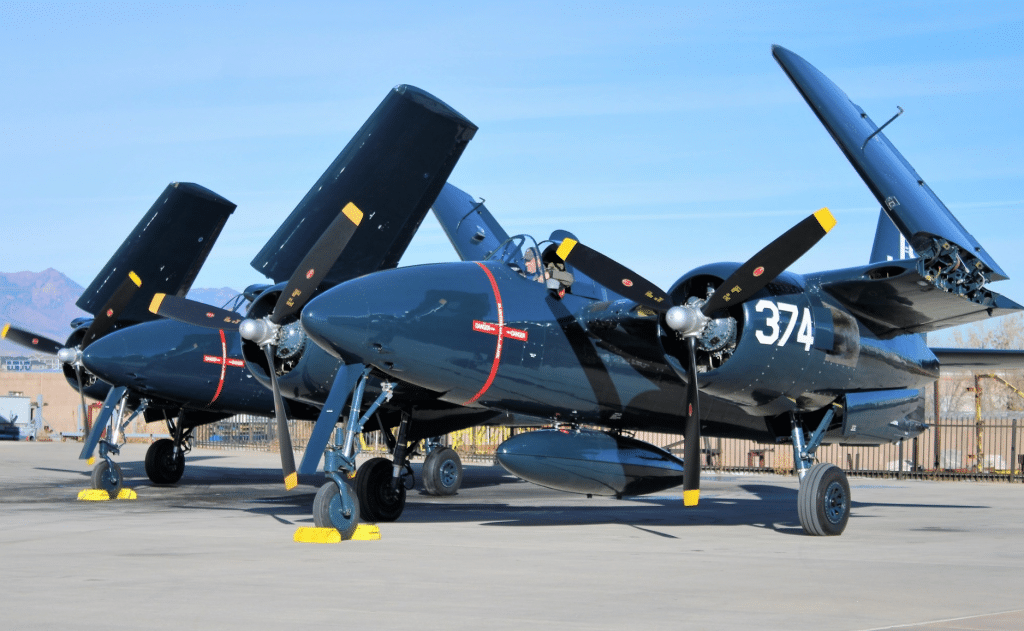
The F7F Tigercat was designed for the U.S. Navy during World War II, but it arrived too late to see significant combat. However, its design was ahead of its time, with a sleek twin-engine setup that made it one of the fastest fighters of its era. It served briefly in the early post-war years, offering a glimpse of what might have been had it entered the war earlier. The Tigercat on display at the museum is a rare example, allowing visitors to see this impressive design up close. It bridges the gap between the classic WWII fighters and the faster, more powerful jets that soon followed.
North American B-25 Mitchell
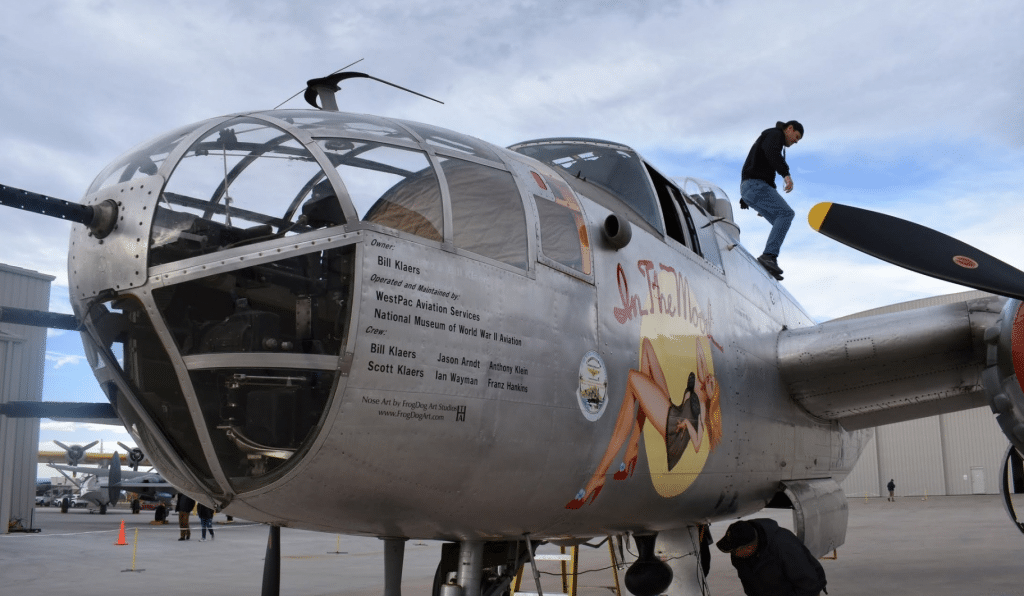
The B-25 Mitchell is best known for its role in the Doolittle Raid, a daring bombing mission over Japan in 1942. This medium bomber became a versatile aircraft, serving in all theaters of the war. It was used for bombing, ground support, and even maritime patrols. The B-25 at the museum provides a close look at the aircraft’s spacious interior and twin-engine design, which made it reliable and adaptable. Seeing this aircraft reminds visitors of its importance in early Allied strikes and the role it played in boosting morale during some of the toughest years of the war.
Grumman TBM Avenger
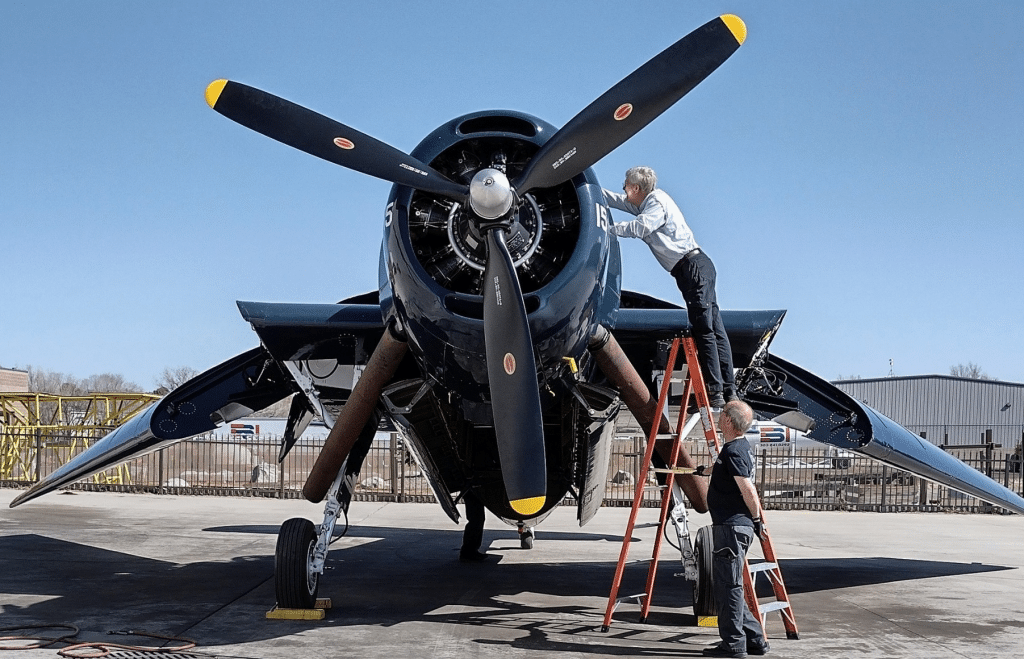
The Grumman TBM Avenger was a torpedo bomber that earned its reputation during naval battles in the Pacific. It became famous for its role at the Battle of Midway and later operations against Japanese naval forces. It was also one of the first aircraft flown by future U.S. President George H.W. Bush. The TBM Avenger at the museum is a reminder of the challenges faced by pilots who flew these lumbering, yet heavily armed bombers against enemy ships. Its design includes a crew compartment and bomb bay, providing a sense of the dangerous missions that these planes undertook.
Grumman F6F Hellcat
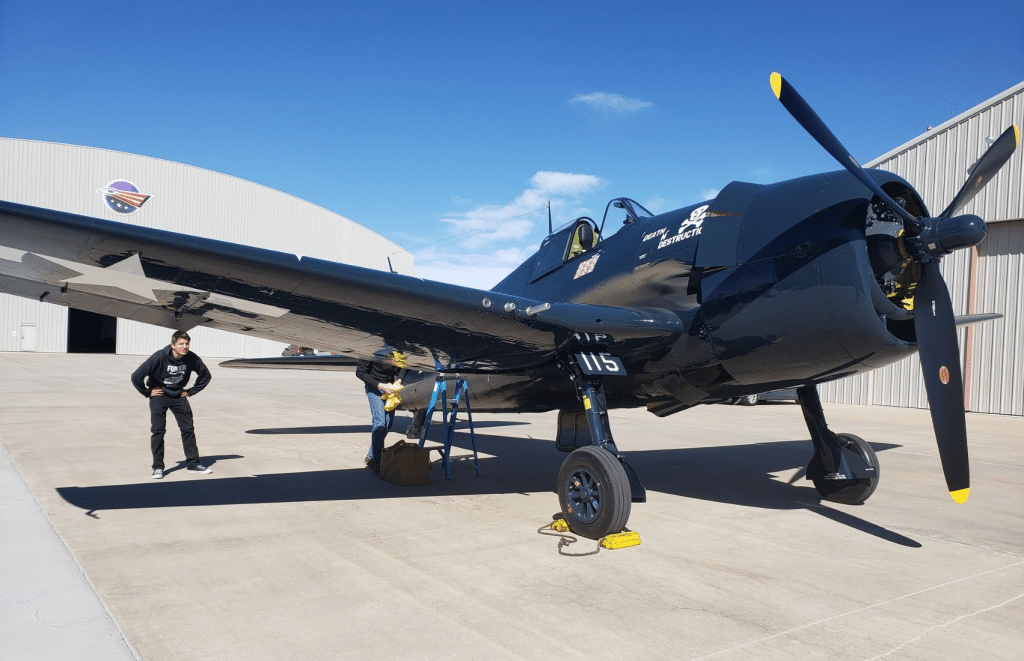
The F6F Hellcat was a fighter aircraft that dominated the skies over the Pacific, accounting for more aerial victories than any other Allied fighter in that theater. Designed to be easy to fly and maintain, the Hellcat was crucial in turning the tide of the air war against Japan. The museum’s Hellcat showcases the straightforward, rugged design that made it so effective in the hands of both novice and experienced pilots. This aircraft was responsible for helping to secure air superiority, which was vital for the success of island-hopping campaigns across the Pacific.
Curtiss SB2C Helldiver
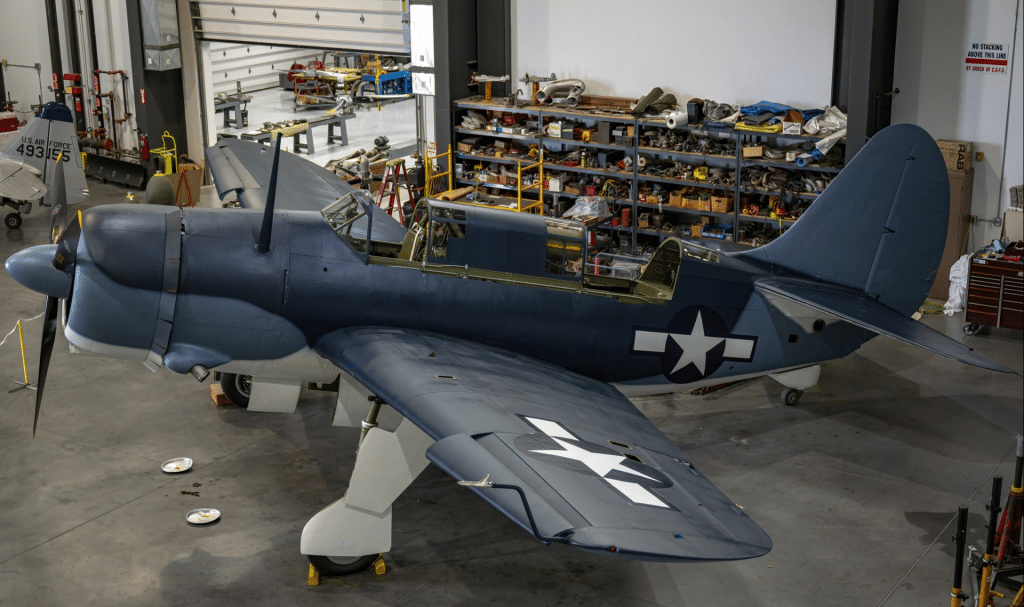
The SB2C Helldiver was a dive bomber that replaced the older SBD Dauntless. It carried out bombing raids against Japanese positions on the ground and at sea. Though it had a reputation for being difficult to handle, it proved to be effective in delivering precise attacks. The Helldiver on display at the museum highlights the shift in dive bomber design, emphasizing greater payload and speed. It represents the importance of naval aviation in the war, showing how dive bombers supported fleet operations and contributed to major victories.
These aircraft represent the innovation, versatility, and bravery of the crews who flew them during World War II. Visitors to the museum can appreciate not only the technical details but also the broader story of how aviation evolved during one of history’s most significant conflicts.














